You are here
Mount Daniel is a beautiful, heavily glaciated mountain in the Central Washington Cascades with lots of prominence. Both the Cascade Crest and the county line follows its ridgeline, allowing Mount Daniel to be the highest point in King and Kittitas Counties (making it efficient for county-highpointers!). And since it's so prominent, you can see Mount Daniel easily from most summits in the Cascades, which makes it an obvious peak to attempt.
Mount Daniel is a great mountain for those who are trying to practice their snow travel skills at elevation without needing any glacial travel experience. This guide will describe climbing Mount Daniel via the Southeast Ridge. If you’re looking for a more advanced challenge that requires roped glacier travel, consider climbing Mount Daniel via the Lynch Glacier.
Notes
Which peak is the summit? - While you’d think it should be obvious where the true summit is, Daniel has three summit blocks that are extremely similar heights (differentiated by ~60 vertical feet). This was further complicated by poor mapmaking, and many maps mark the East Peak (7,899') as the true summit. This is false. Modern equipment identifies the West Peak (7,960') as the true summit. However, the East Peak and Middle Peaks are sometimes visited by more adventurous mountaineers who want to summit all three peaks.
Seasonality - Mount Daniel can be climbed at any time of year, but the access road up to Tucquala Meadows gets a lot of snow, so you’re facing a long approach if you try to climb it before the road melts out. And if you make it to the route, you’ll need to be extremely avalanche cautious, as the snow may not be stable yet. In May or early June, the road will melt out, and you’ll need to decide how much snow you want to cover. By early July, the snowline will be up around Peggy’s Pond, which is when most climbers will start. From July on, Mount Daniel sees a lot of traffic until the fall, but the later you wait the more chossy loose scree you’ll need to cover. So, as always, mountaineering is a question of which conditions you prefer to deal with.
Equipment Needed - Depending on when you climb, you may need flotation (skis/snowshoes) or traction (crampons/microspikes). You'll almost certainly need an ice axe, helmet, and the skills to use them. Skiing season generally lasts until mid-July, though by then you'll need to carry your skis all the way up to Peggy's Pond or further.
Number of Days - Mount Daniel can be done as a single day car-to-car push, but this is a big day, and most climbers will choose to climb it in 2 or 3 days, camping near the scenic Peggy’s Pond.
The Climb
You’ll start at the Tucquala Meadows trailhead, which is often packed with cars, as it serves Mount Daniel and several popular backpacking locations – particularly Tuck/Robin Lakes & Jade/Marmot Lakes. Fit your car in where you can and head slightly south along the access road, where you’ll find the trail up to Squaw Lake + Peggy’s Pond. It’s a steep 1,500 foot climb up to Squaw Lake, and then the trail gets more gradual as it works its way north toward the Pacific Crest Trail (PCT) and Cathedral Rock. Soon, the broad shoulders of Mount Daniel will become visible, though you won’t be able to see the true summit until you're close to it.
Once you reach the PCT, you’ll cross it and take the Peggy’s Pond climbers trail northwest beneath Cathedral Rock. This trail is significantly more rocky and steep, with occasional rock scrambles, but it’s pretty manageable. As you hike, look down to the southwest and enjoy the views of Deep Lake. As you get closer towards Peggy’s Pond, there are quite a few paths you could take, so figure out your way up to the pond, get some water, and take a break.
If you’re camping, find a site here, at least 200 feet away form the pond, or in the Hyas Creek drainage (pros: closer to the climb and more isolated; cons: rockier and feels more alpine). Once camp is made, enjoy the views and get some rest before the climb. If you’re ambitious and have a lot of time in the area, you can consider climbing striking Cathedral Rock, which is just southeast of Peggy's Pond and requires some tricky route-finding and scrambling. If you decide to give it a try, make sure you research the climb and bring beta and photos to follow.
On summit day, get going early and make your way up the southeast ridge of Mount Daniel, which begins just northwest of Peggy’s Pond. You’ll follow a bootpack/cairns up to around 7,000 feet, where you’ll hit a flat section of the ridge. To the north, you’ll see the old Hyas Creek Glacier, which can offer good skiing in the proper season. From here, you’ll begin climbing northwest toward a notch in the south ridge of the East Peak. From this notch, you can choose to head up toward East Peak (if you want to tag it too), but if you’re just going for the true summit, angle northwest across steep chutes toward Middle Peak. Continue to the notch between the West Peak and the Middle Peak.
From this notch, you'll finally see the rocky true summit, which requires a few airy but easy class 3 moves. Find the summit register and take in the enormous views. Make sure you look to the north, where you'll see the Lynch Glacier falling into the spectacular Pea Soup Lake. If you look closely, you may see roped climbers on the Lynch Glacier making their way toward you!
After you’ve taken in the view, down-climb the summit block and head back down. If there’s still a solid snowpack, you’ll have some good chances to boot-ski and plunge-step, and when you get back to the south ridge off the East Peak, you can consider descending down into the Hyas Creek drainage, which is a lot speedier than downclimbing the rest of the southeast ridge.
Consider a rejuvinating jump into Peggy’s Pond to celebrate before you pack up your things and slog back to the car.

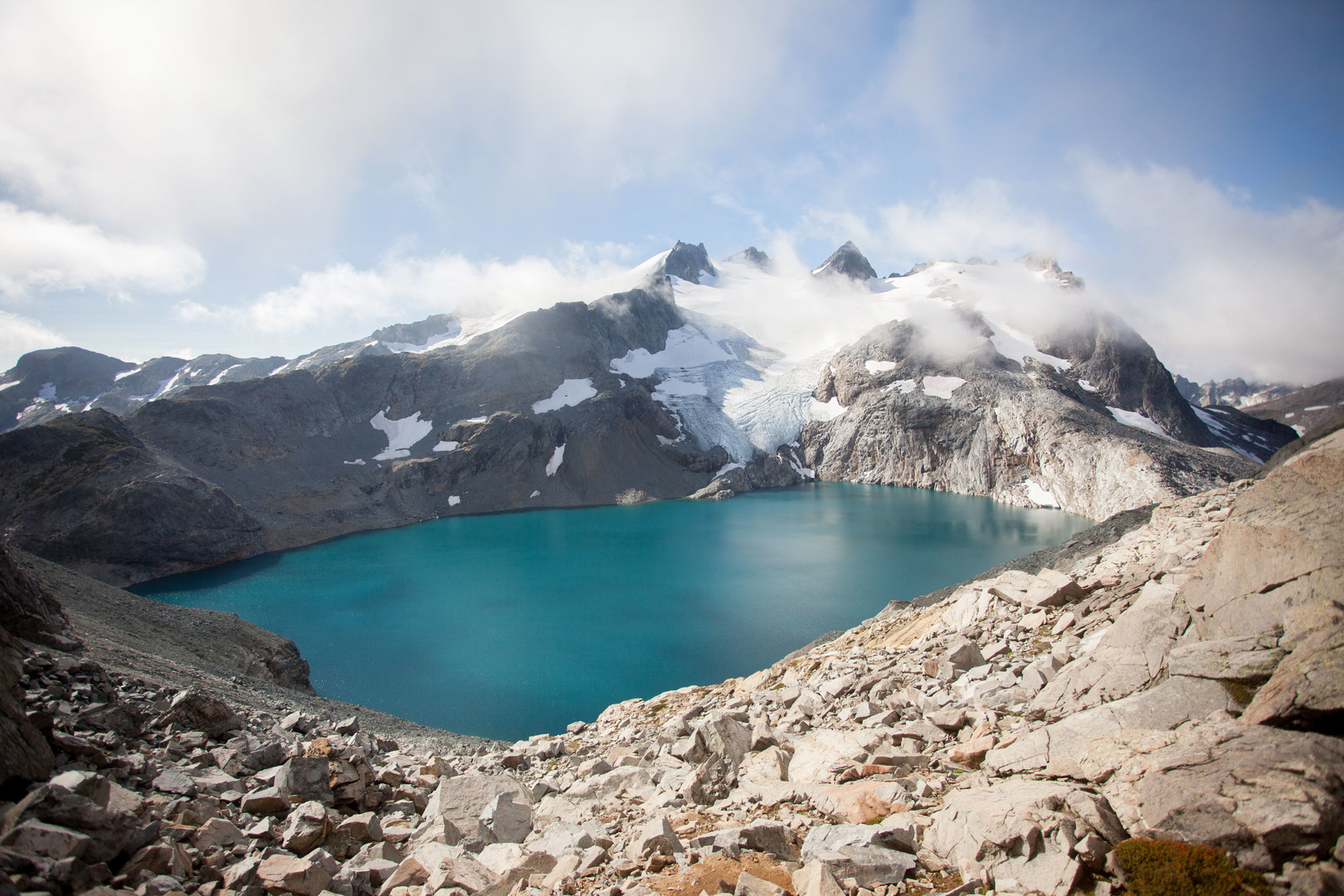
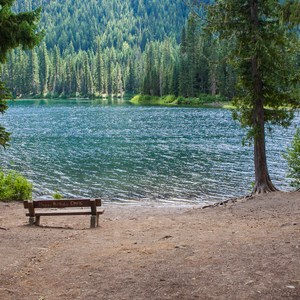

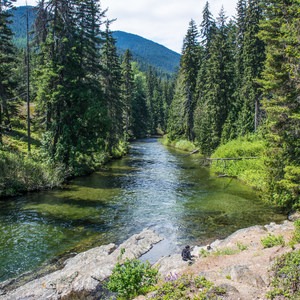
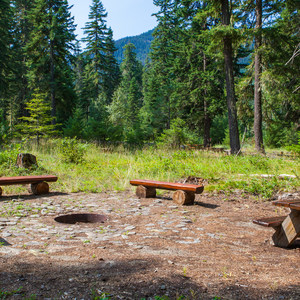

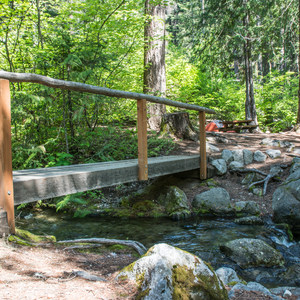



Comments
Sign In and share them.